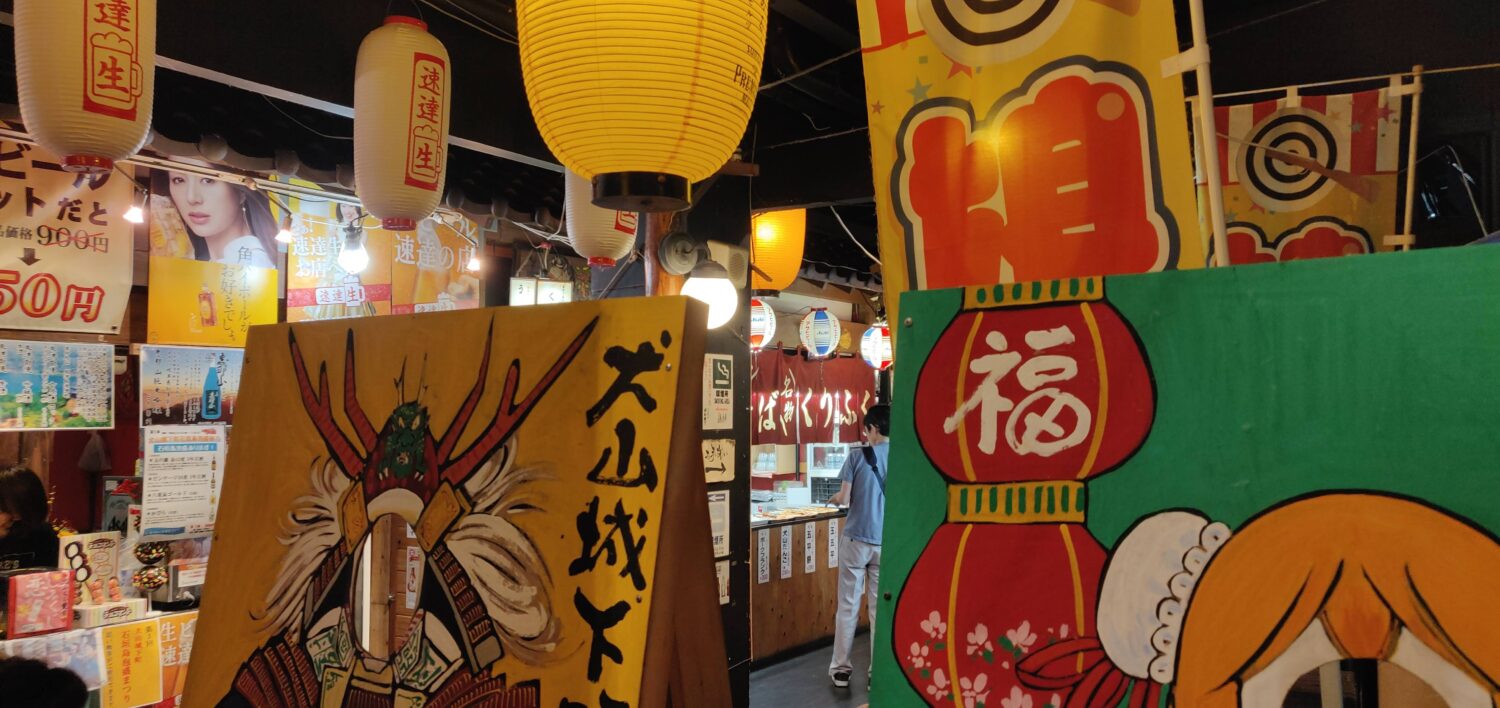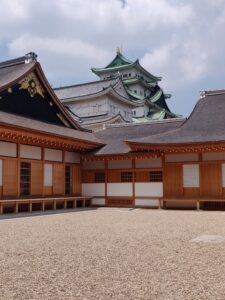
What makes Japan sexy: ‘Children watched films from the Ghibli studio or Pokémon’
Japanese culture has been incorporated into Western society for some time. Everywhere expos are popping up about Japan, such as ‘I love Japan’ in Liège, Belgium. And several websites delve into the world of manga. However, the culture is still seen as mysterious by many. What makes Japan so interesting for the million visitors that come every year? ‘Japanese culture is much more accessible than thirty years ago.’
Japan is seeping more and more into Western culture. You can see that in the ‘I love Japan’ exhibition in Liège, where they teach about the ancient architecture and introduce the pop culture. Why is the land of the rising sun so popular? Until 1853, Japan was a secluded country that didn’t allow foreigners to visit, except for a lucky few. Such as the Netherlands, who had a special trade agreement with Japan. However, for ages, Japan was seen as a far and strange country. This is often referred to as the Far East by Western society. Only in the eighties, did Japan become important because of its economic welfare through their technological development. And only in the last twenty years has Japan become a popular tourist destination. Suddenly, the Japanese culture was introduced worldwide: anime films, Japanese food festivals, Pokémon GO and kawaii dresses.
Pop culture: anime and kawaii
‘Young people are mostly attracted to Japan through manga and anime, which are the Japanese comics and animation films’, says Professor Luk Van Haute. ‘Often, the youngsters are introduced to the Japanese culture at a young age through television.’ Every child knows at least one of these anime series: Pokémon, Yu-Gi-Oh! and Naruto. However, many children have watched anime without realising that it was a Japanese product. ‘Many children watched a film from the famous Ghibli studio or Pokémon. So, in a way they are familiar with anime’, says Professor Luk Van Haute. The 21-year-old Icelandic student Svandís Rafnsdóttir was also introduced to Japanese culture through anime. ‘I only knew about China, until my niece introduced me to the anime Inuyasha when I was ten years old. That made me more interested in the Japanese culture.’
‘My niece introduced me to anime when I was ten years old’ – Svandís Rafnsdóttir (21)
Globalisation played an important role in the rise of popularity of Japan. ‘We can look at the accessibility of Japan now compared to thirty years ago. Thirty years ago, Japan was the Far East. There were no direct flights to Japan, you had to go over Siberia, Alaska, or Southeast Asia. Now you can take a direct flight from Belgium to Japan’, says Luk van Haute. Also, he sees the difference in the Japanese course he teaches at the University of Ghent in Belgium. ‘When Japan was an economic world power, many students started the Japanese course for economic benefits. Managers came to the university, so they could learn the Japanese management system and do business with them. Now that students see Japanese aspects in their daily lives, they come to understand the languages of their favourite series or their favourite J-pop bands.’
Dit bericht op Instagram bekijken
Also, Japan has its typical concepts like kawaii and kakkoii. Kawaii is when you make something extra cute. Kakkoii gives something a cool feeling. It can be used in clothing, food, and design. It is often referred to as an aesthetic. ‘Foreigners that visit Japan, often say that in their country they don’t have kawaii things. Or that the cute things are seen as childish. While in Japan, it is acceptable to like characters such as Hello Kitty or Doraemon’, says Haru Karube from Japan, who leads an exchange camp in Nagoya.
Traditional culture: temples, sushi and respect
The second reason for the popularity of Japan is the traditional aspect of the country. ‘I mostly liked the temples when I visited Japan’, says the Icelandic Svandís. ‘The temples have beautiful architecture. Also, I found that the peace and happiness that surrounded those sacred places were astonishing.’ There are still several historical buildings left standing in Japan, such as temples and shrines, but also castles and secluded villages. The Belgian Daan Proost has been interested in Japan for the last few years. ‘I am a big fan of nature, architecture, and art. Japan has all three: old temples, beautiful nature, and traditional calligraphy’, says he.

Japanese cuisine is one of a kind, and it often uses traditional techniques or traditional dishes. Sushi for example has been around for ages, the oldest written reference to sushi is in 718. However, sushi isn’t the only well-known dish. Soba noodles, miso and mochi are century-old dishes, that are still very popular in Japan. Because of globalisation have Japanese dishes become popular. ‘It used to be impossible to find Japanese food in Belgium. Only twenty years ago, did the first sushi restaurants open in Belgium, and the owners were often Chinese’, says Professor Luk Van Haute. ‘Now, you can find sushi bars in almost every city.’ That is only a positive thing for Daan Proost. He loves Asian cuisine, Japanese food is a big part of it for him. And the Japanese are proud of their kitchen: ‘When I go abroad, I always miss my local food.’
‘When the first sushi restaurants open in Belgium, were the owners often Chinese’ – Professor Luk Van Haute
Japan isn’t only traditional in material, but also manner. The Japanese are often seen as polite and respectful in social settings. For example, they bow in greeting, they hand you their business card, and they use honorifics. Paride Illini from Italy did an exchange to Japan in 2019. He says: ‘What I miss the most is the respect that people show towards both other individuals and nature.’ However, their traditional behaviour has its downside. Japanese live in a hierarchic society. That hierarchy is reflected in business environments. Trainees often work long hours and don’t take days off. And women have it even more difficult. A Japanese government report from 2017 found that women made up just thirteen percent of managerial positions in Japan’, wrote the New York Times in 2018.
Rise of Korea
Japan has taken the popular Asian destination seat for quite some time, but the question should be: how long can it keep it? The neighbouring country, South Korea, is quickly gaining popularity. The main cause is the Korean entertainment business, such as K-drama and K-pop. ‘Korean cinema is far more popular than Japanese cinema. Look at the Netflix-series Squid game: it broke worldwide records’, says Professor Luk Van Haute. ‘A reason for that is the support that Korean cinema receives from their government.’ And that money is paying off. If Daan was given the choice, he would prefer to go to Korea than to Japan. ‘I have read many books by Korean writers and have seen my fair of Korean cinema. That gave me a rough outline of what I wanted to visit. I don’t have that with Japan’, he explains.
Dit bericht op Instagram bekijken
Despite losing popularity against little brother Korea, is Japan still a popular destination. The unique ways that define Japan are reason enough for people to want to visit it. And anime will always have a certain target audience that is loyal to its special drawing style.
Text: Hanna Daniels
Photo: © Hanna Daniels



